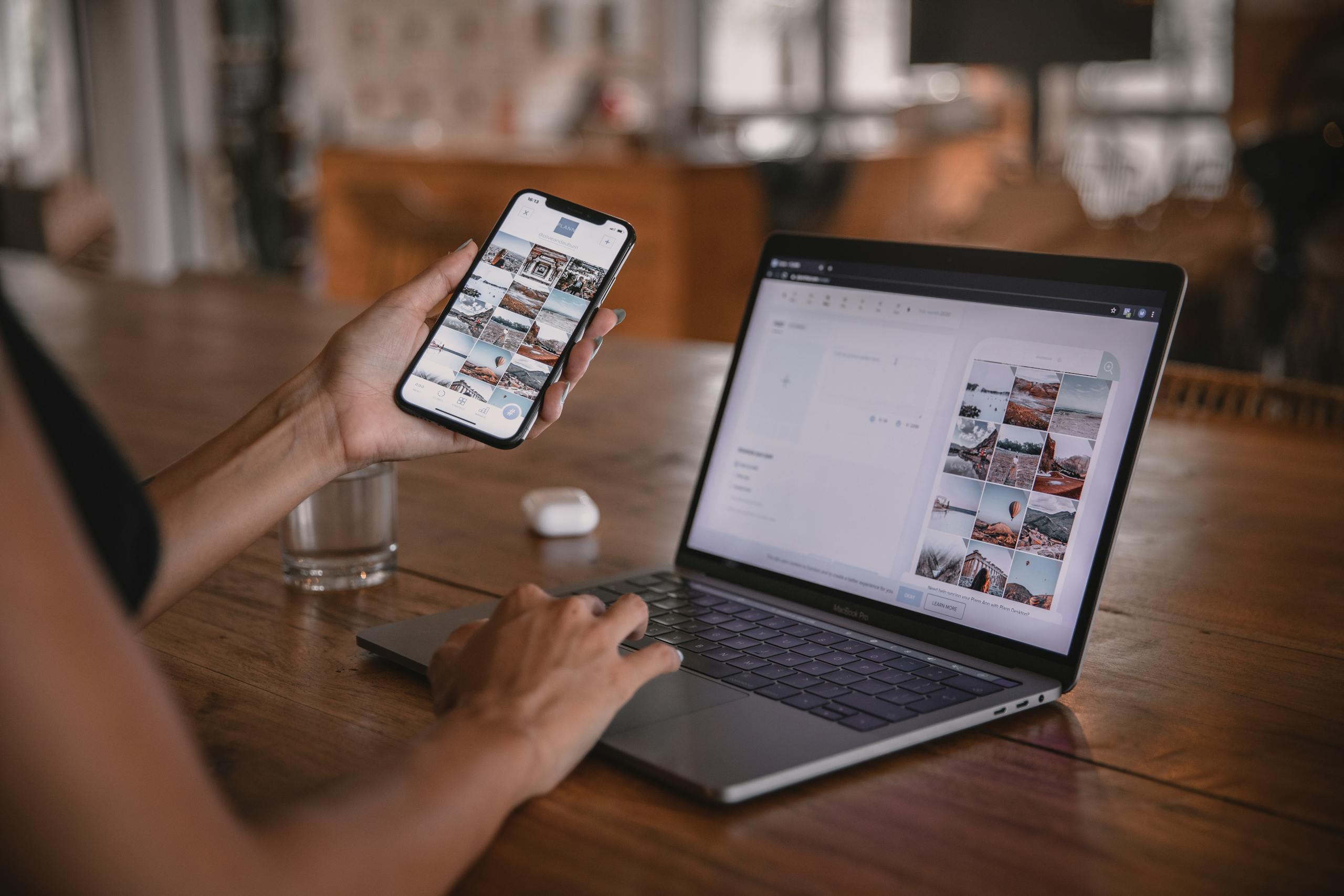Incorporating Visuals In Your Blog Posts
Are you looking to take your blog posts to the next level? One surefire way to capture your readers’ attention and make your content more engaging is by incorporating visuals.
Visuals have the power to convey information quickly, enhance the overall aesthetic of your blog, and leave a lasting impression on your audience.
We will explore the different types of visuals you can include in your blog posts, such as high-quality images, engaging infographics, and dynamic videos. We will also discuss how to choose visuals that have maximum impact and optimize them for better SEO and page load speed.
We will provide best practices for effectively placing visuals within your blog posts to keep your readers hooked from start to finish.
By incorporating visuals into your blog posts, you can elevate your content and create a dynamic and interactive experience that will leave your audience wanting more.
So, let’s dive in and discover the power of visuals in capturing attention in your blog posts.
The Power of Visuals in Capturing Attention
Visuals have the ability to effortlessly grab your readers’ attention, drawing them in like a captivating work of art. In a world filled with information overload, it’s becoming increasingly challenging to capture and maintain your audience’s attention. That’s where visuals come in.
Whether it’s an eye-catching image, an engaging infographic, or a compelling video, incorporating visuals into your blog posts can make a world of difference.
Humans are visual creatures by nature. Our brains are wired to process visual information more effectively and efficiently than text alone. In fact, studies have shown that visuals can increase comprehension and retention rates by up to 65%. By incorporating visuals into your blog posts, you can not only capture your readers’ attention but also enhance their overall understanding and enjoyment of your content.
Visuals also have the power to evoke emotions and create a memorable experience for your readers. A well-chosen image or video can convey a message or tell a story in a way that words alone simply cannot. It can create an emotional connection that resonates with your audience and leaves a lasting impression.
Moreover, visuals can break up the monotony of text and make your blog posts more visually appealing and engaging. They can help to illustrate complex concepts, provide examples, and enhance the overall readability of your content. By incorporating visuals strategically, you can make your blog posts more enticing and encourage readers to stay on your page longer.
Visuals are a powerful tool that can captivate your readers’ attention and enhance their overall experience. By incorporating visuals into your blog posts, you can make your content more engaging, memorable, and effective. So, don’t underestimate the power of visuals and start incorporating them into your blog posts today.

Types of Visuals to Include in Your Blog Posts
When creating your blog content, it’s essential to include a variety of eye-catching images and graphics that enhance the reader’s experience. Including visuals in your blog posts not only captures attention but also helps to convey your message more effectively.
There are several types of visuals that you can incorporate into your blog posts to make them more engaging.
Photographs are a popular choice for adding visual appeal to your blog posts. Whether it’s a stunning landscape or a close-up shot of a product, photographs can bring your content to life and make it more relatable to your readers.
Infographics are a great way to present complex information in a visually appealing and easy-to-understand format. By using charts, graphs, and illustrations, you can simplify data and statistics, making it more digestible for your audience.
Incorporating videos in your blog posts can be highly effective. Videos can grab attention quickly and provide a dynamic and interactive element to your content. You can create your own videos or embed relevant ones from platforms like YouTube or Vimeo.
Lastly, don’t forget about illustrations and custom graphics. These can be used to visually represent concepts or ideas that are difficult to explain with words alone. Illustrations can add a touch of creativity and uniqueness to your blog posts, making them more memorable for your readers.
Including a variety of visuals in your blog posts can greatly enhance the reader’s experience and make your content more engaging. From photographs to infographics, videos to illustrations, there are countless options to choose from. Experiment with different types of visuals and find what works best for your blog niche and target audience.

Choosing High-Quality Images for Maximum Impact
Selecting high-quality images is crucial for maximizing the impact of your blog posts and captivating your audience. When choosing visuals for your blog, it’s important to consider the resolution, composition, and relevance to your content.
First and foremost, ensure that the images you select are of high resolution. Low-quality or pixelated images can appear unprofessional and distract from your message. High-resolution images will make your blog posts visually appealing and maintain the professionalism of your brand.
Composition is another key factor to consider. Look for images that have a strong focal point and balanced elements. A well-composed image will draw the reader’s eye and enhance the overall aesthetics of your blog post.
Relevance is equally important when selecting images. Choose visuals that directly relate to your content and reinforce your message. This will help to create a cohesive and cohesive reading experience for your audience.
Choosing high-quality images for your blog posts is vital for creating maximum impact. By selecting high-resolution images with strong composition and relevance, you can captivate your audience and enhance the overall visual appeal of your blog posts. Remember to always prioritize quality when it comes to selecting visuals for your blog.
Creating Engaging Infographics to Convey Complex Information
To truly captivate your audience, try creating engaging infographics that effectively convey complex information. Infographics are a powerful visual tool that can simplify complicated concepts and make them more accessible to your readers. By combining text, images, and charts, you can present information in a visually appealing and engaging way.
When creating infographics, it’s essential to choose a design that aligns with your brand and the message you want to convey. Keep in mind that simplicity is key. Avoid cluttered designs and opt for a clean and organized layout. Use contrasting colors to highlight important information and make it stand out.
Another crucial aspect of creating engaging infographics is to use relevant and accurate data. Conduct thorough research and gather reliable information to ensure the credibility of your infographic. Make sure to cite your sources to establish trust with your audience.
Make your infographic interactive and shareable. Add clickable elements or embed links to provide additional information or resources. This will encourage your readers to engage with your content and share it with others, increasing its reach and impact.
Incorporating engaging infographics into your blog posts can significantly enhance the understanding and retention of complex information. So, give it a try and watch your audience become captivated by your visually appealing and informative content.
Incorporating Videos for a Dynamic and Interactive Experience
Utilizing videos within your blog content can provide a dynamic and interactive experience, elevating the sophistication of your message. Videos have become increasingly popular in blog posts as they offer a unique way to engage with your audience. By incorporating videos, you can effectively convey complex information and captivate your readers in a visually stimulating manner.
One of the key benefits of incorporating videos in your blog posts is the ability to present information in a more engaging way. Instead of relying solely on text and images, videos allow you to demonstrate concepts, showcase products, or even share personal experiences. This interactive experience helps to hold the attention of your audience and make your content more memorable.
Videos can help to simplify complex information. By visually demonstrating concepts or providing step-by-step instructions, you can make it easier for your readers to understand and absorb the information you’re presenting. This can be particularly useful when discussing technical or complicated topics.
Furthermore, videos can enhance the overall aesthetic of your blog. With the right editing, graphics, and background music, you can create a visually appealing video that complements your written content. This combination of visual and textual elements creates a more immersive experience for your audience.
Incorporating videos into your blog posts can enhance the overall experience for your readers. By utilizing videos, you can engage, educate, and entertain your audience in a way that text alone can’t. So why not take advantage of this powerful tool and add some videos to your blog posts?
Optimizing Visuals for Better SEO and Page Load Speed
Enhancing the visual appeal of your blog with optimized images and videos can significantly improve your site’s SEO and ensure faster page load speeds. When it comes to optimizing visuals for better SEO and page load speed, there are a few key steps you can take.
Make sure to compress your images before adding them to your blog posts. Large image files can slow down your page load speed, so using tools like TinyPNG or JPEGmini to reduce file sizes without sacrificing quality is essential.
In addition to compressing images, it’s important to optimize their file names and alt tags. Use descriptive and relevant keywords in both the file names and alt tags to help search engines understand what the image is about. This will not only improve your SEO but also make your blog more accessible to visually impaired readers.
Another crucial aspect of optimizing visuals is using lazy loading techniques. Lazy loading allows your page to load images only when they are visible on the screen, which can significantly improve page load speed, especially for long blog posts with multiple images.
By following these simple steps, you can enhance the visual experience of your blog while also improving its SEO and page load speed. Remember, a visually appealing blog with optimized visuals not only attracts more readers but also provides a better user experience overall.
Best Practices for Placing Visuals in Your Blog Posts
When placing visuals in your blog posts, remember that strategic placement can captivate your readers and enhance their understanding of your content, making it more memorable and shareable. To ensure the best practices for placing visuals, consider a few key points.
It’s important to position visuals near relevant text. By placing an image close to the corresponding information, you provide a visual cue that reinforces the message. This helps readers grasp the concept more easily and aids in retention.
Avoid overwhelming your readers with too many visuals. While images can enhance your blog post, an excessive number can distract and clutter the page. Instead, choose visuals that are most impactful and align with your overall message.
Consider the size and dimensions of your visuals. Optimize images for web use to ensure fast loading times. Large, high-resolution images can slow down your page and negatively impact user experience. Strike a balance between image quality and file size to maintain optimal page load speed.
Remember to add alt text to your visuals. This descriptive text provides context for visually impaired users and helps with search engine optimization. Alt text should be concise, accurately describing the image while incorporating relevant keywords.
By following these best practices for placing visuals in your blog posts, you can effectively engage your readers and enhance their overall experience.
Conclusion
Incorporating visuals in your blog posts is a surefire way to capture and hold your readers’ attention. By including high-quality images, engaging infographics, and dynamic videos, you can create a visually appealing and interactive experience for your audience.
Not only will this enhance the overall look and feel of your blog posts, but it will also help convey complex information more effectively. Remember to optimize your visuals for better SEO and page load speed, and follow best practices for placing them strategically throughout your content.
With visuals, you can take your blog posts to the next level and make a lasting impression on your readers.







